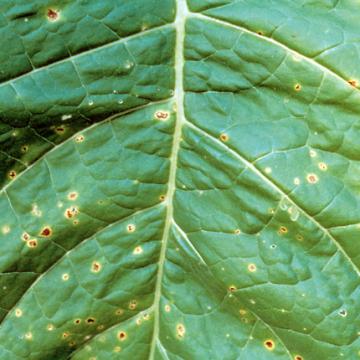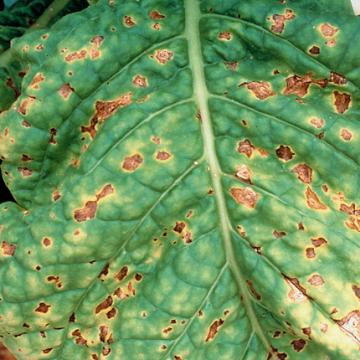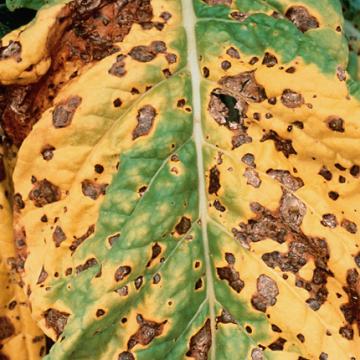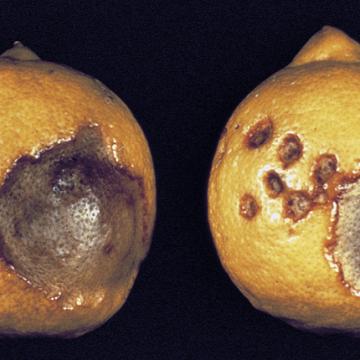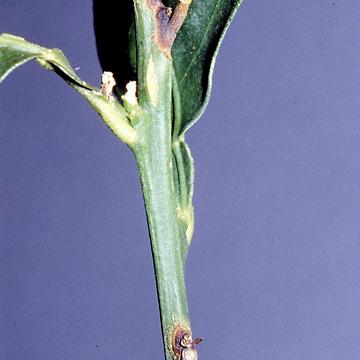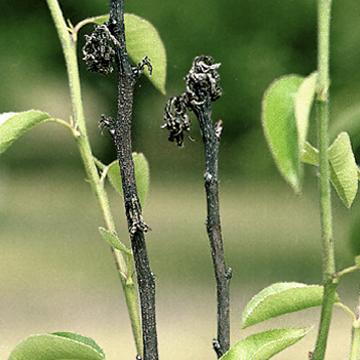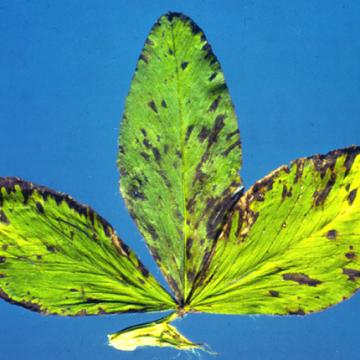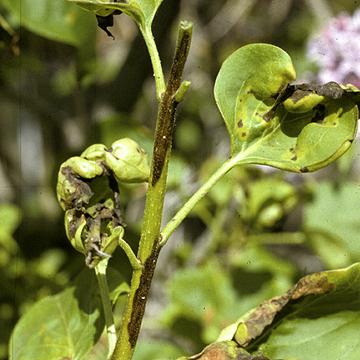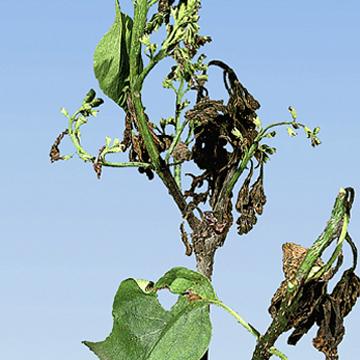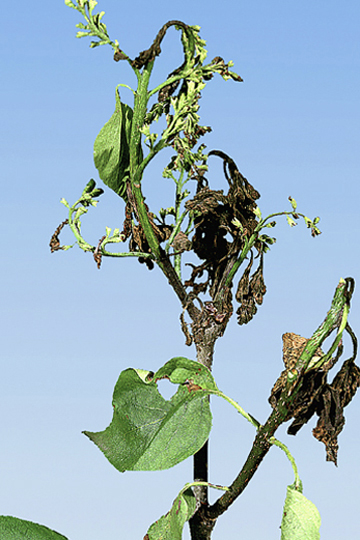Search term:
Pseudomonas syringae pv. Syringae
DISEASE: Angular leaf spot
HOST: Tobacco
Leaf with light brown, angular spots. The difference between this disease and wildfire of tobacco is that wildfire is caused by a strain that produces tabtoxin. It causes conspicuous halos around lesions and large parts of a leaf may turn yellow .
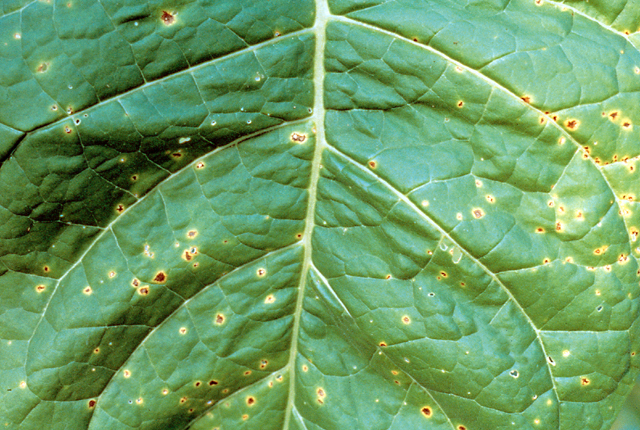
Angular leaf spot | Tobacco
DISEASE: Angular leaf spot
HOST: Tobacco (Nicotiana tabacum)
PATHOGEN: Pseudomonas syringae pv. tabaci
SOURCE: H. Shew
DISEASE: Angular leaf spot
HOST: Tobacco
Yellowing of adjacent tissues occur as spots age (midseason). It causes conspicuous halos around lesions. Large parts of a leaf may turn yellow.
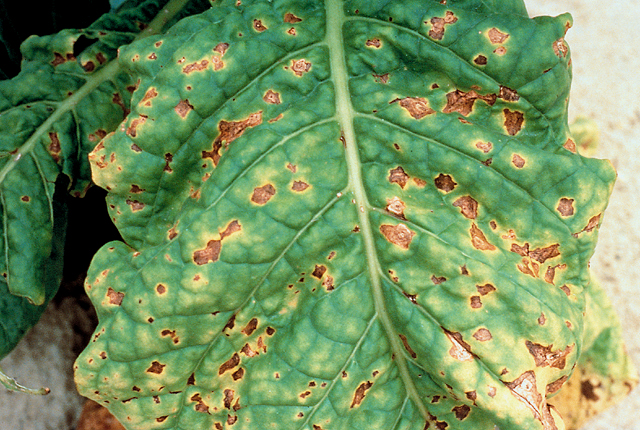
Angular leaf spot | Tobacco
DISEASE: Angular leaf spot
HOST: Tobacco (Nicotiana tabacum)
PATHOGEN: Pseudomonas syringae pv. tabaci
SOURCE: H. Shew
DISEASE: Angular leaf spot
HOST: Tobacco
Severely diseased leaf with extensive yellowing.
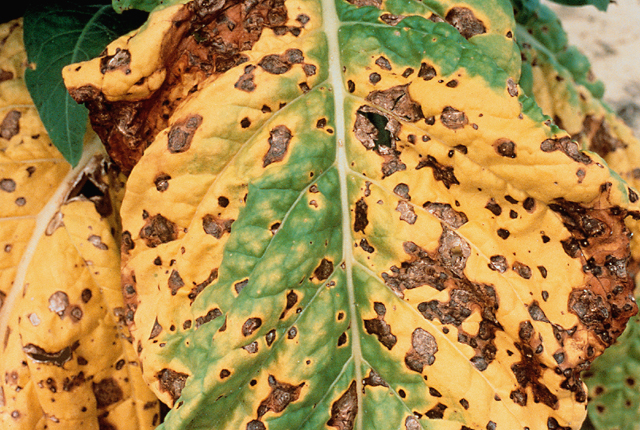
Angular leaf spot | Tobacco
DISEASE: Angular leaf spot
HOST: Tobacco (Nicotiana tabacum)
PATHOGEN: Pseudomonas syringae pv. tabaci
SOURCE: H. Shew
DISEASE: Bacterial blast and black pit
HOST: Citrus (Lemon)
The term "black pit" refers to black lesions on fruit, which may be specks or large, sunken pits as seen here. They also may be light tan, later becoming reddish brown to black.
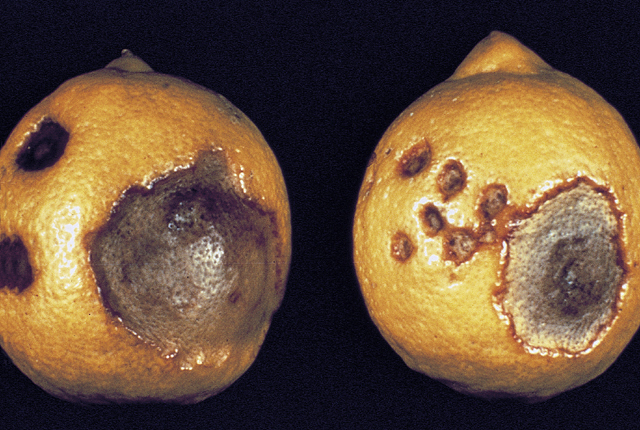
Bacterial blast and black pit | Citrus (Lemon)
DISEASE: Bacterial blast and black pit
HOST: Citrus (Lemon) (Citrus limon)
PATHOGEN: Pseudomonas syringae pv. syringae
SOURCE: J. Menge
DISEASE: Bacterial blast and black pit
HOST: Citrus (Lime)
Characteristic symptoms of brownish black lesions on twigs and leaves (blast), starting with infection of petioles. Black pit refers to brown to black sunken spots on fruit, 5 to 20 mm in diameter.
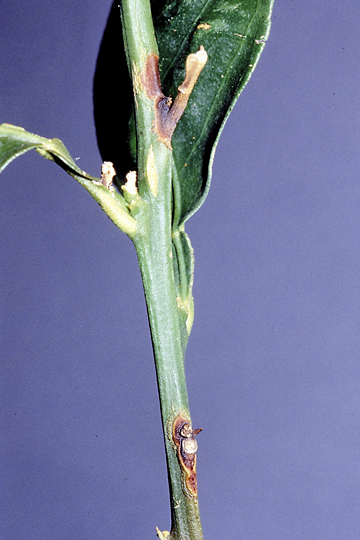
Bacterial blast and black pit | Citrus (Lime)
DISEASE: Bacterial blast and black pit
HOST: Citrus (Lime) (Citrus sp.)
PATHOGEN: Pseudomonas syringae pv. syringae
SOURCE: P. Broadbent
DISEASE: Bacterial blast
HOST: Pear
The bacterium infects all flower parts and may spread and kill the entire spur.
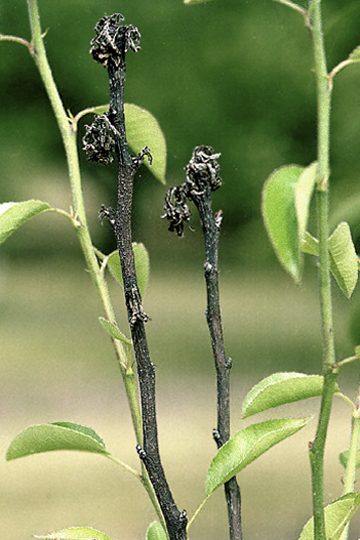
Bacterial blast | Pear
DISEASE: Bacterial blast
HOST: Pear (Pyrus communis)
PATHOGEN: Pseudomonas syringae pv. syringae
SOURCE: W. Sinclair
DISEASE: Bacterial blight (Leaf spot)
HOST: Clover
Diseased leaf with elongated, reddish brown lesions, especially numerous on the margins.
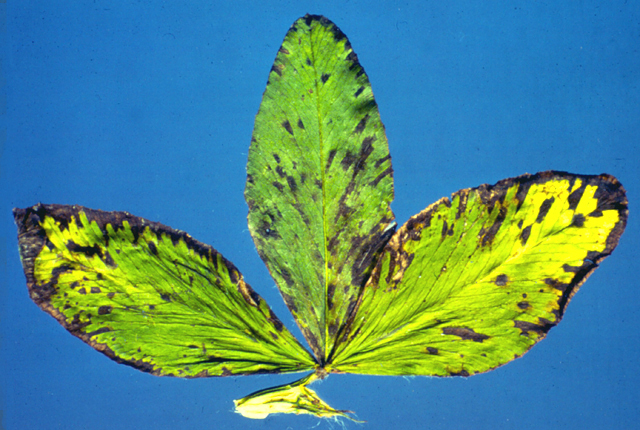
Bacterial blight (Leaf spot) | Clover
DISEASE: Bacterial blight (Leaf spot)
HOST: Clover (Trifolium alexandrinum)
PATHOGEN: Pseudomonas syringae pv. syringae
SOURCE: M. Shurtleff
DISEASE: Bacterial blight
HOST: Lilac
Blighted twig with shriveled leaves and dark brown streaks on stem.
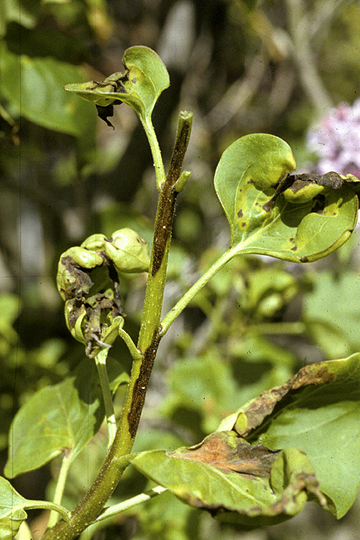
Bacterial blight | Lilac
DISEASE: Bacterial blight
HOST: Lilac (Syringa vulgaris)
PATHOGEN: Pseudomonas syringae pv. syringae
SOURCE: S. Thomson


